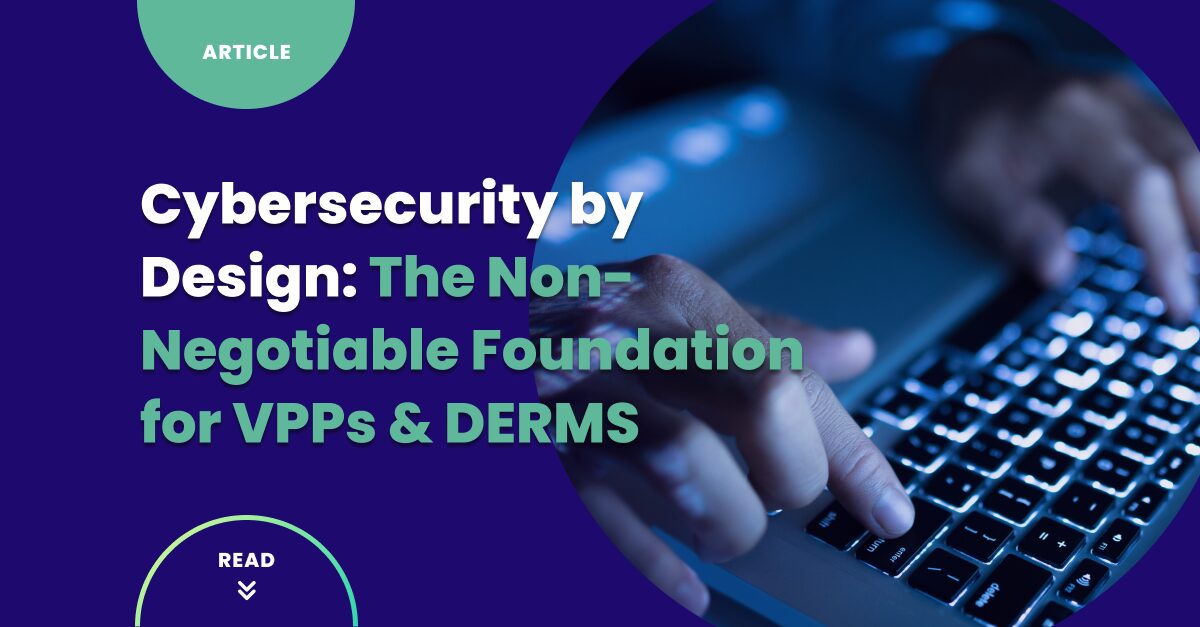Cybersecurity by Design: The Non-Negotiable Foundation for VPPs & DERMS

The transition to a decentralized, software-defined grid is an undeniable necessity for the future of energy. However, this evolution brings with it a critical new challenge: a vastly expanded cyber-attack surface. As a growing number of distributed energy resources—from residential smart inverters to utility-scale batteries—become interconnected, each device represents a potential entry point for a malicious actor. The sheer volume of these edge assets and the complexity of their interactions create a cyber storm that legacy security approaches are simply not equipped to handle.
This new reality demands a fundamental shift in how we approach cybersecurity. For modern DERMS and VPP 2.0 solutions, security cannot be an afterthought, bolted on to a system that is already operational. Instead, it must be integrated from the ground up through a Security by Design architecture. This principle ensures that robust cybersecurity measures are an inherent part of every stage of the development process, from initial design to deployment and beyond. Neglecting this foundational approach can lead to catastrophic consequences, including grid instability, data breaches, and financial losses.
Essential Pillars of Security by Design
A robust Security by Design architecture for the software-defined grid is built upon several critical pillars:
- Zero Trust Design: The proliferation of DERs makes the traditional security perimeter obsolete. A Zero Trust model, which operates on the principle of “never trust, always verify,” is therefore essential. In this framework, every device, user, and service—regardless of its location—must be authenticated and authorized before gaining access to any network resource. This approach, which includes micro-segmentation and dynamic, risk-based policies, prevents an attacker who has compromised one device from easily moving laterally across the network to access more critical assets.
- Adherence to Standards like IEC 62351-3: The energy industry has specific cybersecurity standards that must be met. IEC 62351-3, for example, is a critical standard that defines robust security requirements for operational technology (OT) environments. By building systems that adhere to these standards from the outset, developers can ensure that essential security features, such as role-based access control (RBAC), cryptographic key management, and secure event logging, are in place.
- Mutual TLS (mTLS) Encryption: In a decentralized network, the security of data in transit is paramount. Mutual Transport Layer Security (mTLS) is a powerful protocol that ensures both the client (e.g., a smart inverter) and the server (e.g., a VPP platform) authenticate each other before any data is exchanged. This creates a secure, encrypted communication channel between all parties, preventing man-in-the-middle attacks and ensuring the confidentiality and integrity of commands and telemetry data.
From Risk Management to Strategic Advantage
In today’s threat landscape, neglecting robust cybersecurity is not just a risk management problem; it’s a competitive disadvantage. Utilities, aggregators, and DER operators who fail to prioritize security face not only the potential for operational disruption and compliance penalties but also damage to their reputation and a loss of customer trust.
Conversely, a commitment to Security by Design positions an organization as a reliable and trustworthy partner in the energy transition. By building a secure foundation, they can confidently scale their DER programs and VPPs, knowing that their infrastructure is resilient against evolving threats. This proactive approach transforms security from a burdensome requirement into a key differentiator, enabling stakeholders to unlock the full potential of a software-defined grid without compromising on safety or reliability.
